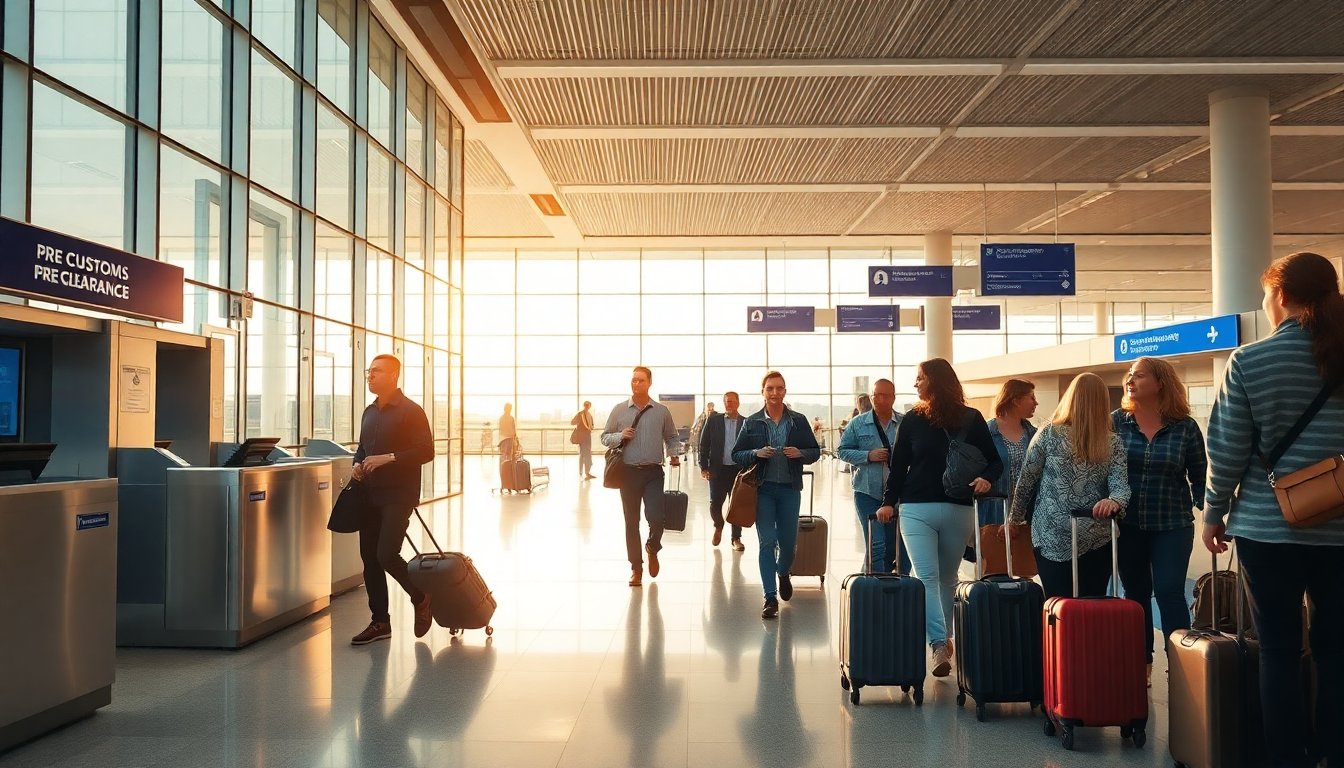Table of Contents
U.S. ambassador hints at changes to airport pre-clearance system
During a recent forum in Banff, Alberta, U.S. ambassador to Canada Pete Hoekstra expressed concerns that may indicate a potential shift in the longstanding airport pre-clearance system. This system has enabled Canadian travelers to complete U.S. customs procedures before boarding their flights, a convenience valued by many since its introduction in 1952. However, Hoekstra’s comments regarding a decline in usage numbers have sparked discussions about the future viability of this service.
Understanding the implications of pre-clearance
During the Global Business Forum, Hoekstra raised concerns about the declining statistics related to pre-clearance at Canadian airports. He remarked, “The numbers are down, and we’re not sure we can make the numbers work anymore… it’s something that is done at the expense of the U.S. government. We paid for it.” This comment generated significant discussion among attendees.
The economic impact on travel and tourism
Colin Robertson, a veteran diplomat and forum moderator, responded to Hoekstra’s remarks by emphasizing the historical importance of pre-clearance. He stated, “Pre-clearance was established under President Dwight Eisenhower and has functioned effectively for decades. Canadians remain a vital source of tourism for the U.S. Ending pre-clearance would be akin to cutting off your nose to spite your face.” His comments highlighted the significant economic ramifications that could arise from any changes to the pre-clearance system.
Challenges ahead for travelers and airlines
Hoekstra’s remarks faced careful examination as he clarified, “Nobody said we’re ending pre-clearance. Don’t put words in my mouth.” Yet, the implications of his statement sparked concerns about the future of the pre-clearance system. Robertson highlighted the necessity for U.S. officials to consider the impact on Canadian travelers, arguing that a reduction in pre-clearance would create significant challenges for many.
Statistical insights on travel trends
Statistics Canada recently revealed a remarkable 25.4 percent decline in Canadians returning by air from the U.S. compared to the previous year. This data highlights the evolving landscape of air travel and raises questions about the viability of pre-clearance operations. U.S. customs and immigration officers currently manage pre-clearance facilities at major airports throughout Canada, including Toronto, Vancouver, and Montreal.
The potential fallout for Canadian airlines
Experts are raising alarms about the implications of withdrawing pre-clearance for Canadian airlines. John Gradek, a professor of aviation management at McGill University, highlighted the potential impact on travelers. He noted that the absence of pre-clearance could significantly increase travel times, potentially adding hours to a journey. This change may deter passengers from using Canadian hubs, which depend heavily on U.S. traffic for their international routes. Gradek’s assessment underscores the wider consequences that could arise from alterations to the pre-clearance system.
U.S.-Canada airport pre-clearance discussions raise concerns
He elaborated on the advantages of airport pre-clearance, stating, “Imagine arriving on a direct flight from London to Los Angeles. Without pre-clearance, you could face two to three hours in customs upon arrival. Conversely, clearing customs in Calgary only takes about 15 to 20 minutes, allowing passengers to enter the U.S. as domestic travelers.” This efficiency has become a significant selling point for Canadian carriers.
As the discussion continues, the response from U.S. policymakers remains uncertain. Gradek warned, “This could be just the beginning of a more complex dialogue regarding U.S. measures affecting Canadian air travel. We should stay alert for the outcomes of these discussions.”
The U.S. ambassador’s remarks suggest a potential shift in the airport pre-clearance arrangement between the U.S. and Canada. The implications for travelers and airlines could be considerable, marking a pivotal moment in cross-border air travel.


